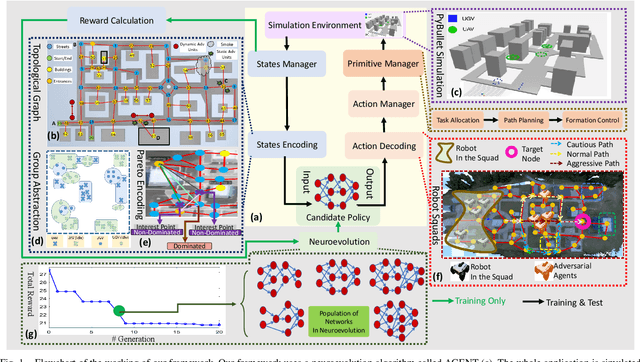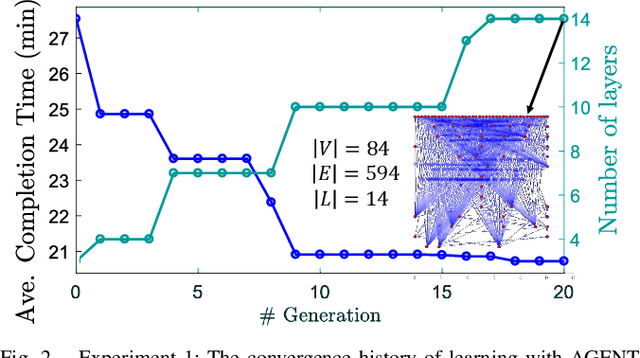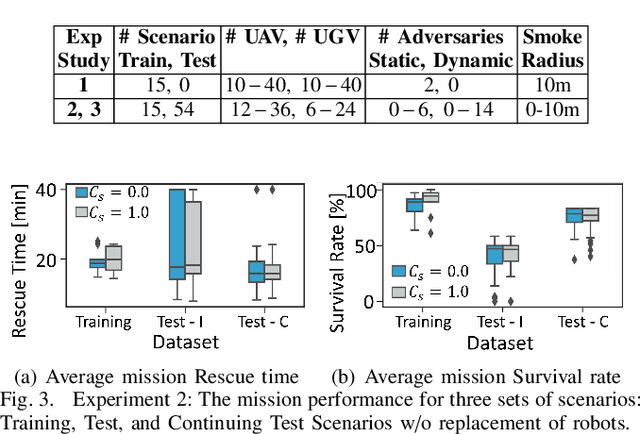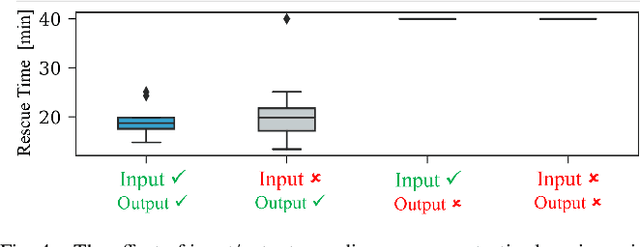Ehsan Esfahani
Towards Physically Talented Aerial Robots with Tactically Smart Swarm Behavior thereof: An Efficient Co-design Approach
Jun 24, 2024Abstract:The collective performance or capacity of collaborative autonomous systems such as a swarm of robots is jointly influenced by the morphology and the behavior of individual systems in that collective. In that context, this paper explores how morphology impacts the learned tactical behavior of unmanned aerial/ground robots performing reconnaissance and search & rescue. This is achieved by presenting a computationally efficient framework to solve this otherwise challenging problem of jointly optimizing the morphology and tactical behavior of swarm robots. Key novel developments to this end include the use of physical talent metrics and modification of graph reinforcement learning architectures to allow joint learning of the swarm tactical policy and the talent metrics (search speed, flight range, and cruising speed) that constrain mobility and object/victim search capabilities of the aerial robots executing these tactics. Implementation of this co-design approach is supported by advancements to an open-source Pybullet-based swarm simulator that allows the use of variable aerial asset capabilities. The results of the co-design are observed to outperform those of tactics learning with a fixed Pareto design, when compared in terms of mission performance metrics. Significant differences in morphology and learned behavior are also observed by comparing the baseline design and the co-design outcomes.
Learning Robot Swarm Tactics over Complex Adversarial Environments
Sep 13, 2021



Abstract:To accomplish complex swarm robotic missions in the real world, one needs to plan and execute a combination of single robot behaviors, group primitives such as task allocation, path planning, and formation control, and mission-specific objectives such as target search and group coverage. Most such missions are designed manually by teams of robotics experts. Recent work in automated approaches to learning swarm behavior has been limited to individual primitives with sparse work on learning complete missions. This paper presents a systematic approach to learn tactical mission-specific policies that compose primitives in a swarm to accomplish the mission efficiently using neural networks with special input and output encoding. To learn swarm tactics in an adversarial environment, we employ a combination of 1) map-to-graph abstraction, 2) input/output encoding via Pareto filtering of points of interest and clustering of robots, and 3) learning via neuroevolution and policy gradient approaches. We illustrate this combination as critical to providing tractable learning, especially given the computational cost of simulating swarm missions of this scale and complexity. Successful mission completion outcomes are demonstrated with up to 60 robots. In addition, a close match in the performance statistics in training and testing scenarios shows the potential generalizability of the proposed framework.
 Add to Chrome
Add to Chrome Add to Firefox
Add to Firefox Add to Edge
Add to Edge